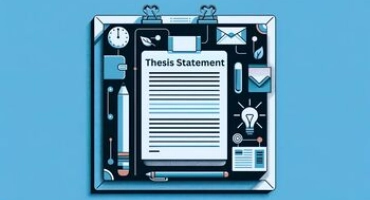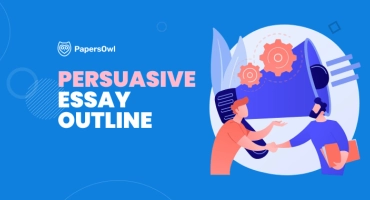How to Write an Essay Outline: An Ultimate Guide
Table of contents
Have you ever felt like your thoughts are all over the place when you write an essay, or do you just want to make the essay writing a breeze? Well, you have hit the right spot!
This article will break down how to write an essay outline into simple, easy-to-follow steps. No more staring at a blank page, wondering what an essay outline is or how to write it.
With well-structured writing and a clear thesis statement, you will have a roadmap to navigate your essay, keeping your writing process on point.
Here is a sneak peek of what we will cover in this article:
- After reading this article, you will understand the importance of essay outline;
- You will learn about the essential outline parts;
- Understanding various types of outlines is crucial for creating a well-structured essay.
Whether you are an experienced essay writer looking to level up your game or a newbie trying to score big on your first big assignment, this essay writing guide has covered you.
Essential Parts of Essay Outline
Writing an effective outline for essay writing can be like baking a cake without a recipe. You know you want a delicious result, but things can get messy without understanding the key components. You need full sentences that make sense. Then, you require a thesis statement and introduction, and you must mix them in order.
Similarly, many struggle because they do not fully grasp the significance of body paragraphs and how to handle them effectively. Here is a template for a basic essay outline:
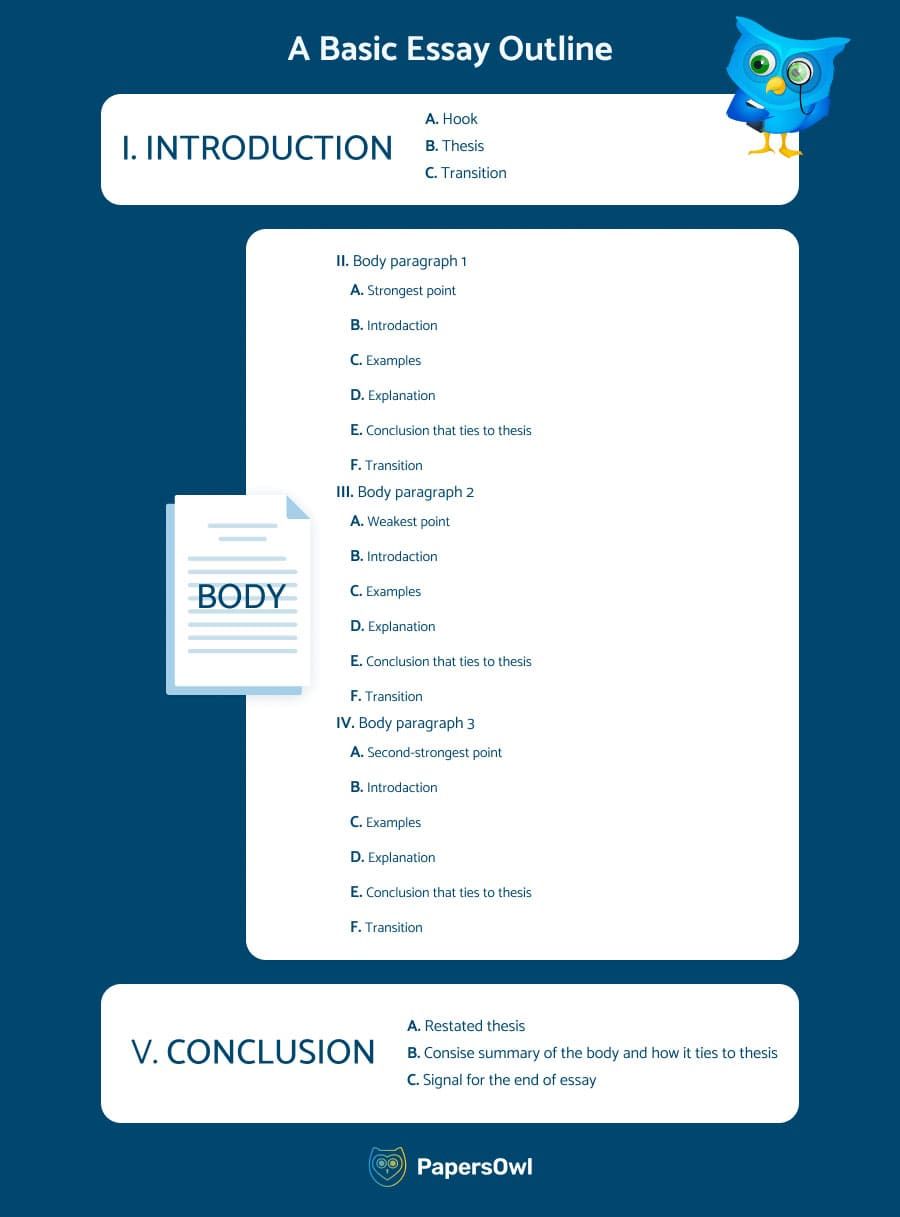
Introduction
An introduction is the writer’s chance to make a solid first impression and set the tone for the rest of the writing. Following this approach will leave your readers wanting to read more essay outline examples!
Body paragraphs
In the structure, the body parts of an essay are like the heart of your writing. Instead of filling it with meaningless information, you should focus on delving into your thesis statement, providing examples, supporting points, and evidence to support your arguments. This is especially true for persuasive essays.
The main points are the big ideas you want to explore in your body paragraphs. They will act as topic sentences ─ the guiding stars or key arguments ─ keeping your writing on track and your reader engaged. Talk about the lessons learned and think about a smooth transition before you move to the next paragraph. It will help your reader understand and address counterarguments, if there are any!
In the context of a five-paragraph essay, your body paragraphs play a crucial role. Each body paragraph should focus on a main idea introduced in the opening or topic sentence. Afterward, you should include supporting points such as facts, quotes, anecdotes, or explanations to provide depth and context to your main idea. Try to use full sentences with a clear focus.
Ultimately, you can incorporate real-life instances and credible data to strengthen your arguments further, adding credibility and persuasiveness to your introduction and the main body paragraph. Your overall structure will improve, and you will use relevant information.
Remember to provide evidence for each fact and use one idea per paragraph. If you wish to add more detail or sub-points, use full sentences, not run-on examples.
Conclusion
The last part of your academic expository writing is the conclusion ─ it is like the grand finale of a fireworks show. It is your chance to bring your main point back into focus, like telling of personal growth.
However, instead of repeating your thesis word for word, it is better to restate it with a new perspective or a broader understanding, giving your readers a sense of closure.
Once you have restated your thesis, it is time to give your readers a quick recap. Summarize all the main points, reminding your readers of their incredible journey.
Finally, you must add your personal touch by sharing your final thoughts on the topic or a call to action if it is relevant. You can also add a few sensory aspects to evoke deep thoughts in the reader.
In your detailed essay outline format, the final paragraph of your paper is where you tie everything together. You revisit your thesis, summarize your main ideas, and leave your readers with food for thought.
Common Types
While it is all up to you to decide how to organize an outline, we advise you to ensure your essay outline adheres to the requirements provided along with the essay topic. You can choose the most convenient if there’s no required system for formatting the outline. Some are widely accepted. What are those types?
Alphanumeric structure style
The alphanumeric structure is the most frequent one. It features and follows these characters in the order of Roman numerals, Capital letters, Arabic numerals, and Lowercase letters.
Every subdivision is described as Roman numbers, and then you go with capital letters, Arabic numerals, and lowercase letters, accordingly.
- Roman numerals (I, II, III, etc.) to identify major sections of the outline. Usually, you will have five of them, each for every paragraph of the paper.
- Capital letters (A, B, C, etc.) appear to show points in the sections.
- Arabic numbers (1,2,3, etc.) are used for further important details.
- Lowercase letters (a,b,c, etc.) indicate if more details are needed.
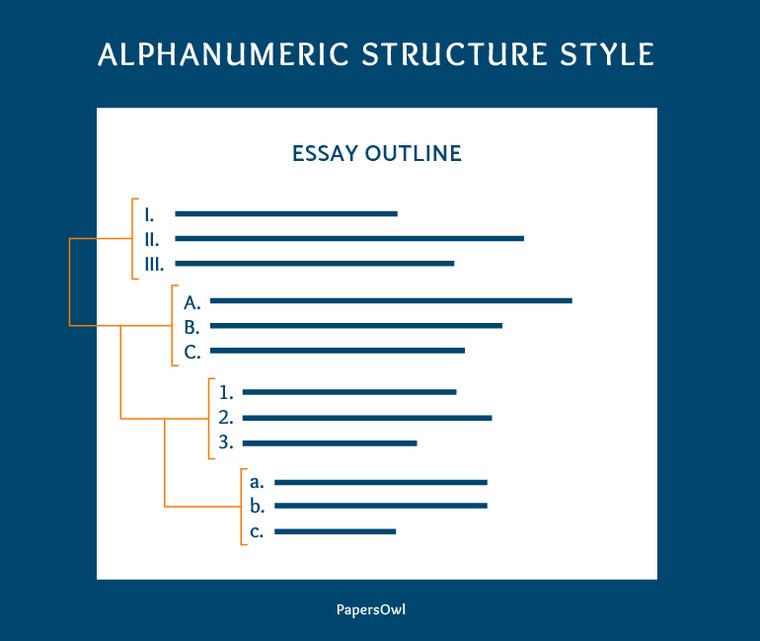
Decimal structure style
The decimal structure is similar to the alphanumeric structure but has one difference. Here we use only numerals. The added benefit of the decimal outline system relates to its decimal notation, which shows how every outline level relates to the main section.
Some people prefer this structure type because it might be easier to display the connection between each element.
- The outline begins with 1.0 and continues with 2.0, 3.0, etc. determining the beginning of every new section.
- For every new information point, we change the number after the dot. For instance, when we add information to the paragraph with the number 3.0, we name a new piece of information 3.1, 3.2, and so on.
- In case further details are needed, we add more decimals. In our case, it will look like 3.1.1, 3.2.1, etc.
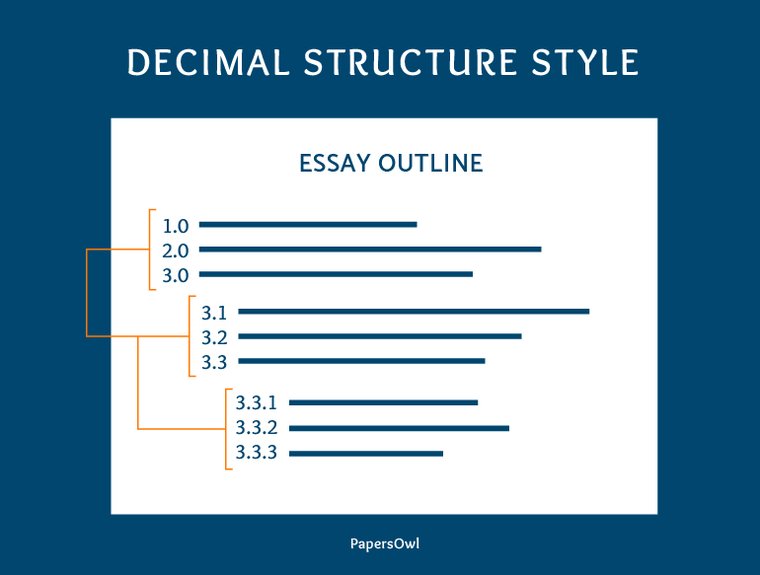
Steps to Creating an Outline for an Essay With a Thesis Statement
Learning how to write an essay outline is never easy! Each body paragraph must explain the thesis, especially in research papers where the logical flow is crucial!
It is not about following rigid rules but crafting a flexible framework that helps you express your ideas effectively. If it’s a literary analysis essay outline or something critical, following the rules comes first!
Do you often wonder who can “write an essay for me”? Following the steps mentioned below, you can create a stellar example and, as a result, write a well-structured paper on your own:
- Understand the Essay Prompt or Choose a Topic: Consider it the starting point of your work or your writing an MLA paper journey. You either have a prompt handed to you, or you get to pick your essay topic. If you have a prompt, make sure you fully understand it. If you’re choosing a topic, pick something that genuinely interests you, making the writing process much more enjoyable.
- Conduct Preliminary Research: Always do so before you write an essay outline! Gather sufficient information and evidence. Read the books or scroll on the internet to gather some preliminary research and provide supporting evidence. It will help you understand your topic better and get a general idea and a logical flow regarding what others have said.
- Identify the Main Argument and Supporting Ideas:Imagine you’re building the skeleton. Identify the central point to make your outline clear. It will be like the major bones, giving structure to your piece. A detailed outline is not necessary at this point. Once done, consider supporting ideas or arguments for the main point. These are like the smaller bones that provide strength and context.
- Arrange the Points in a Logical Order: Once you have the key points identified for your final essay, it is time to put them together in an organized manner to create a coherent structure, a critical aspect of constructing effective academic works. Think about the flow of your essay with all the supporting details. How should your primary ideas be arranged to ensure a smoother information flow? It is like assembling a puzzle ─ each piece should fit together seamlessly.
- Draft the Outline: In the end, you must start drafting things using your primary and supporting ideas. Use headings, subheadings, and bullet points to make it clear and organized. It will make your essay structure clearer and your writing process smoother. Your structure is your guide, so the choice is yours whether you want to make it a full-sentence outline (detailed) or a short-sentence (brief).
Tips for a Successful Outline
An effective essay example outline is like setting the stage for a well-organized and compelling work. Whether you are working on an expository, descriptive, or literary analysis essay outline, the right approach can make all the difference.
- Be Specific but Concise: Avoid unnecessary complexity and get straight to the point when outlining. The more specific you are about your essential points and supporting details, the more your outline will be more effective. Take it as trimming the fat off your writing ─ only the lean, meaningful topic sentence remains.
- Get Rid of the Fluff: Toss all the extra words and phrases that don’t add value to your research paper outline. Your outline should be free from unnecessary fluff. Removing it will make the essay outline simpler and more focused. When learning how to write an essay outline, you must include a basic argumentative essay outline and a good thesis statement that sums up the main points in the essay, which can do such a marvelous job. A college essay outline is your secret weapon for crafting clear, well-organized, and efficient essays.
- Use Bullet Points for Clarity: Remember, bullet points are your friends when outlining. They break down your ideas into bite-sized pieces, making your outline easy to skim and understand. It is like using road signs to navigate through your outline structure.
- Maintain a Consistent Structure: Keep things tidy and consistent. If you make an alphanumeric outline with Roman numerals for the main points, stick with them throughout. The same goes for subheadings and bullet points. Consistency in your alphanumeric format makes your outline easy on the eyes and brain.
- Revise and Adjust as Necessary: Feel free to revise and adjust as you go along. If a new idea pops up, incorporate it. If a section doesn’t seem to fit, reorganize. Keep refining your outline until it meets your satisfaction.
By following these tips, you can create an outline for an essay. With all the strategies mentioned above, you are well-equipped to craft a successful outline.
Examples and Templates of Various Essay Outlines
Crafting an essay can sometimes feel daunting, and sometimes you need to ask PapersOwl for help. That’s where the essay outline template comes in handy. It is like a trusty guide tailored for different essay types. Each template will serve as a roadmap, ensuring your essay is well-structured. Whether you share a personal story, build a persuasive argument, or aim for your dream school, we have covered you with these templates.
Let’s discuss each one and see how they work wonders:
Template for Narrative Writing
Imagine this as a storytelling guide. In a narrative essay, you are sharing a personal story or experience. Your outline should include sections for the introduction, plot development, characters, setting, climax, and conclusion. It is like mapping out the chapters of your own life’s story.
A narrative essay is a piece of writing that tells a story about an event on something creatively. It is similar to telling a personal story, a fiction narrative, or a literacy narrative essay. It is the least complicated kind of writing because you don’t have to perform any research. The most common topic for such an essay would be “How I spent my summer vacation.” The narrative essay has to be engaging. To do so, you have to:
- Conduct a thrilling plot.
- Include a conflict (i.e., a protagonist and an antagonist).
- Make bright characters.
- Exaggerate descriptions, but do not lie.
Using your imagination is one of the best strategies for entertaining your writing. Let it fill your essay with details and language to make your story come alive. Describe smells, emotions, feelings, and so on. However, remember that, in most cases, narrative essays are real stories.
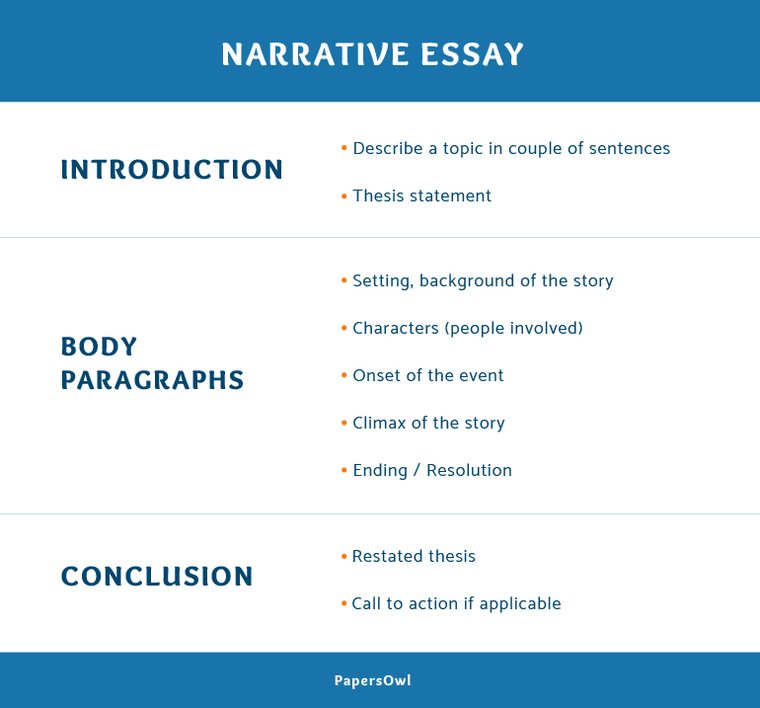
Template of Argumentative Essay Outline
An argumentative essay outline presents a clear stance and supports it with evidence. Your outline should have sections for the introduction, thesis statement, main arguments with supporting evidence, counterarguments, and a strong conclusion.
When writing such an essay, remember to:
- Pick a topic you are interested in (the reader will always notice your disinterest).
- Provide good arguments (be concrete).
- Research as much as possible (surprise your reader with new facts).
When working on your argument, collect valuable sources such as scientific magazines, academic journals, documentaries, newspapers, etc.
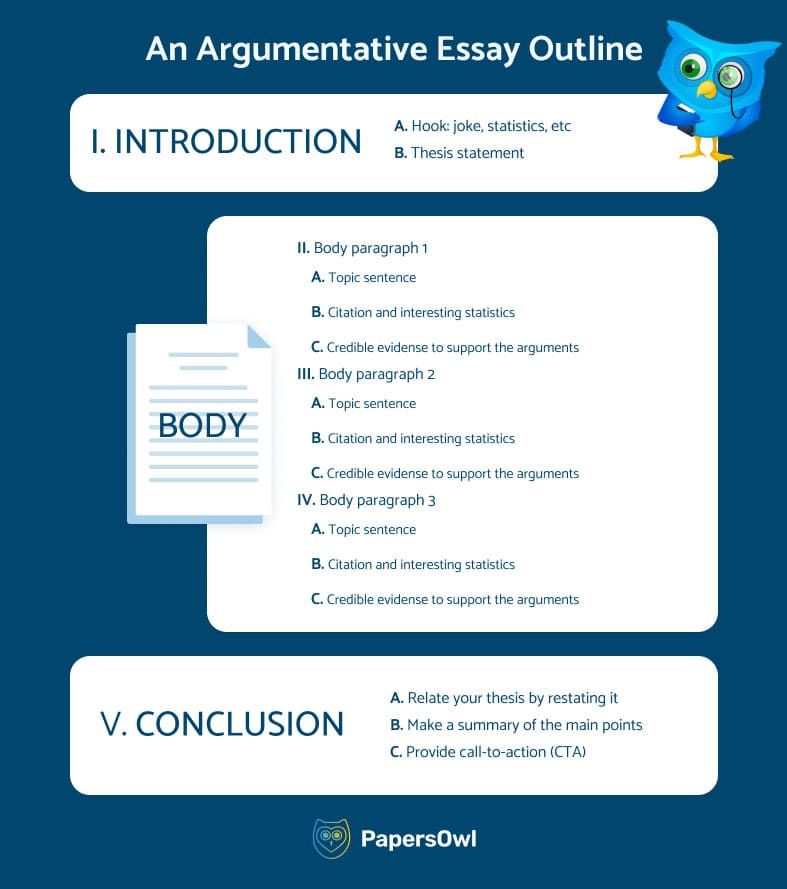
Template of Compare and Contrast Essay Outline
In a compare and contrast essay, you are exploring two or more subjects. Your outline should include sections for the introduction, points of comparison, points of contrast, and a conclusion that ties it all together. It involves writing where you should highlight in which ways certain things are similar to and different from one another. This writing assignment stimulates critical thinking and forces you to conduct a compelling analysis.
Generally, comparative essays have an introduction (topic, theme, and thesis statement), body paragraphs, and a conclusion summarising the comparison. This article will describe only some of the processes of writing a comparison essay. However, I will provide you with specific tips:
- Use cue words (also, like, similar to, unlike, compared to, nevertheless, etc.)
- Use cue words (also, like, similar to, unlike, compared to, nevertheless, etc.)
- Be more specific in your thesis.
By the last point, write something like “BMW and Mercedes-Benz provide the same product; however, their marketing strategy differs” instead of “This essay will compare BMW and Mercedes-Benz.”
This is what your outline should look like:
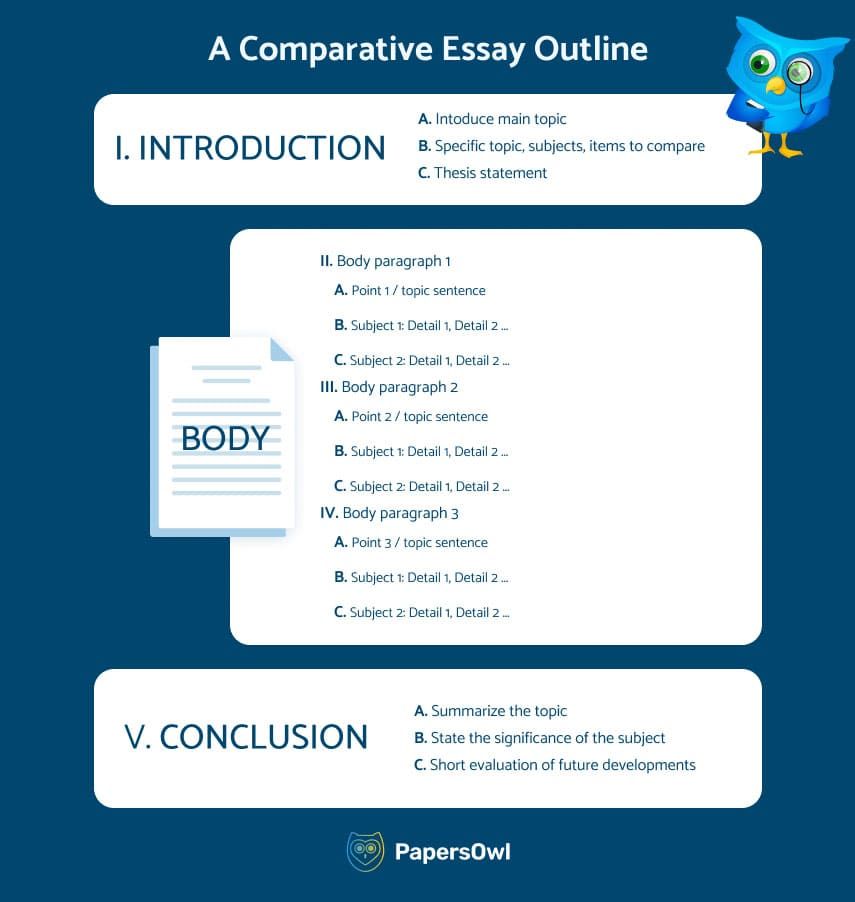
Template of Admission Essay Outline
Admission essays are your chance to stand out. Your outline should cover the introduction, your personal background, achievements, challenges faced, and why you’re a perfect fit for the institution. It’s like crafting a masterpiece self-portrait in the writing world.
These templates, such as the APA outline, offer structure and direction for different essay types, making your academic journey less daunting and more organized. So, choose the one that fits your essay type, and let it be your guiding star.
Also, before creating an essay outline, you must take some time out and search for an outline example for an essay on Google. Looking through outline essay examples can provide valuable insights into structuring your academic essays.
Benefits of the Essay Outline in the Writing Process
Imagine having a powerful tool at your disposal, one that not only simplifies your writing process but also elevates the quality of your work. An outline is that very tool, often underestimated but holding the key to success in academic and creative writing. Enhancing organization and boosting your writing efficiency brings many advantages.
Also, it acts as a lifesaver when it comes to revisions. Whether you want to rearrange paragraphs, add new points, remove irrelevant details, or need to start a planning sheet for an essay, you can do so easily without losing your way. Lastly, using an essay outline enhances the final output. It ensures your essay is well-organized, coherent, and impactful.
Therefore, a basic outline for an essay is a secret weapon in academic writing, making drafting easier, revisions quicker, and the final result more impressive.
Elevate Your Essay Writing with Outline
As we wrap up our journey through the art of essay outlining, let’s take a moment to savor the significance of this invaluable tool. Outlining an essay is not merely a roadmap but the key to unlocking your full potential. It makes essay setup a breeze, revisions a cinch, and elevates your final output. So, the next time you face a blank page, remember the trusty outline by your side, ready to guide you through the essay layout. With this ultimate guide in your toolkit, you’re well-equipped to craft essays that captivate, persuade, and inspire.




